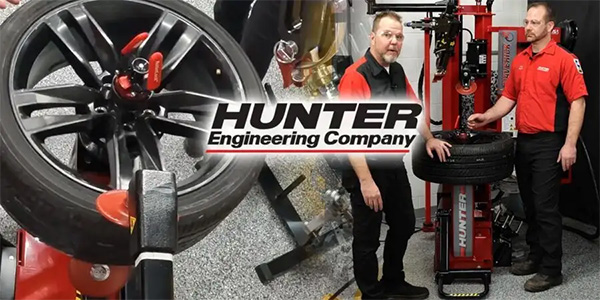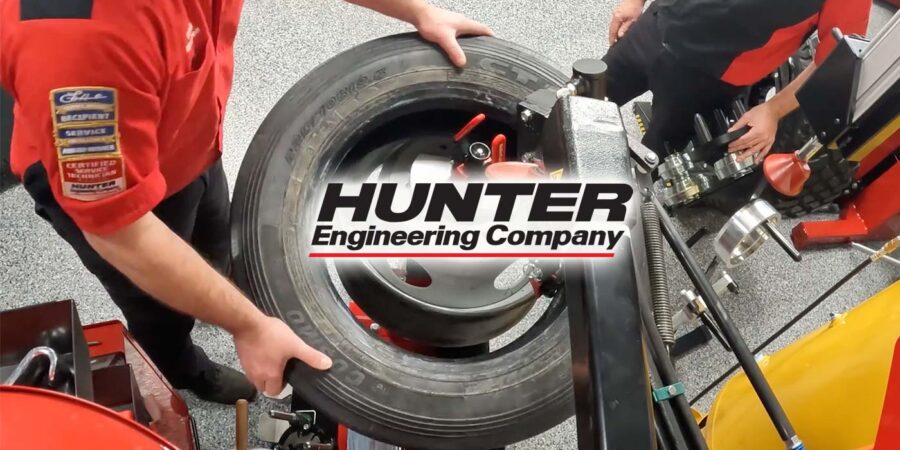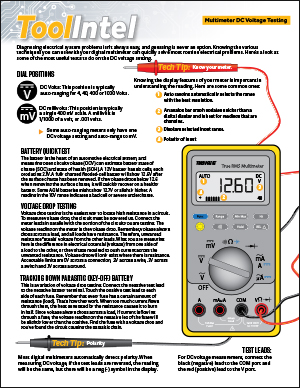Most of us remember the “good old days” when an engine’s air/fuel (a/f) ratio was controlled by a mechanically operated carburetor. Due to the inherent design limitations of mechanical systems, however, carburetors don’t respond efficiently to changes in barometric pressure, temperature and humidity. In the quest for improved fuel economy and reduced exhaust emissions, import manufacturers were among the first to introduce electronic fuel injection systems that could rapidly compensate for changes in atmospheric conditions.
The evolution of electronic fuel injection systems includes two basic methods of measuring the air flowing into an engine: indirect (speed density) and direct (air flow sensor) metering. Currently, electronic air flow sensors are the most dominant in the market. Electronic air flow sensors may operate alone or in conjunction with a conventional manifold absolute pressure (MAP) sensor.
SPEED DENSITY SYSTEMS
To better understand air flow sensors, let’s recall that, in the most basic speed density system, the volume and density of the air entering the engine is a calculated, rather than a directly measured, value. The powertrain control module (PCM) calculates the volume and density of the intake according to inputs from various sensors, including the throttle position (TP), engine coolant temperature (ECT), intake air temperature (IAT), barometric pressure (BARO), MAP and crankshaft position (CKP) sensors. As the engine begins to warm up, inputs from the oxygen or A/F ratio sensors trim the air/fuel ratio to a stoichiometric or 14.7:1 (by weight) A/F ratio.
Since the volume and density of air entering the engine is a calculated, rather than directly measured, value in the speed density system, a slight miscalibration in any of the initial inputs may produce an inaccurate A/F ratio. Consequently, engineers began searching for a more accurate method of measuring intake air flow.
MECHANICAL AIR FLOW SENSORS
Most early EFI systems used a mechanical vane-type air flow sensor to measure the volume and density of the air entering the engine. The vane’s movement would theoretically be proportional to the amount of air entering the engine. In reality, most vane-type sensors use a potentiometer and a series of switches to produce voltage inputs indicating closed, partial and wide-open throttle operation. In most applications, the vane sensor also contains an IAT sensor to measure ambient air temperature and an on/off fuel pump relay switch to disable the electric fuel pump when the ignition is key on, engine off.
ELECTRONIC AIR FLOW SENSORS
Three basic types of electronic air flow sensors have been introduced to the import market during the past two decades — Karman vortex, hot-wire and hot-film. Very briefly, the Karman vortex air flow sensor is perhaps the most unusual because it is designed to generate vortices in the intake air flow. Obviously, increased air flow makes these vortices more turbulent. The relative turbulence of these vortices is measured by sonic waves generated by the sensor itself. These measurements are then sent to the PCM as a frequency signal.
The hot-wire and hot-film air flow sensors use the principle of heat dissipation to measure air flow. To illustrate the basics, an electric current flows through a platinum wire suspended in the engine’s air intake stream. As the throttle opens, increased intake air flow cools the wire, which decreases the wire’s electrical resistance. As resistance is reduced, amperage flow increases through the wire. At this point, let’s remember that increased air density and humidity accelerates the cooling effect, while reduced air density and humidity does exactly the opposite. The amperage flow through the wire is converted by the air flow sensor into a voltage or frequency signal that indicates to the PCM how many grams per second of air flow is passing into the engine.
The hot-film sensor operates on the same principle of heat dissipation, but it is less susceptible to contamination from air-borne oil and debris coming into the engine’s air intake. Most electronic air flow sensors produce direct voltage signals, while some produce square-wave frequency signals rated in cycles per second or hertz (Hz).
It’s important to understand that, despite similar appearances, air flow sensors are very application-specific with many different bore sizes and electrical configurations. Keep in mind, too, that an electrical input from an air flow sensor is interpreted according to the programming of the PCM. Consequently, it’s important to consult a technical database for application-specific diagnostic information before making any costly assumptions.
AIR INTAKE INSPECTION
Before condemning an air flow sensor, always evaluate the overall condition and efficiency of the intake system. To illustrate, air flow sensor issues on vehicles like Volkswagen may be caused by an air filter intake screen that’s clogged with airborne debris. The air intake may also be crushed or blocked due to collision damage. In addition, a “false air” condition may be created by non-metered air leaking through loose connections or cracks in the ducting located between the air flow sensor and throttle plate. Intake manifold and vacuum hose leaks will also cause a similar false air flow problem. Out-of-time camshafts, and partially clogged catalytic converters or crushed exhaust pipes, will also affect accurate air metering because the metered air flow won’t be commensurate with throttle opening and engine speed.
DIAGNOSTIC OVERVIEW
To better understand how external issues affect air flow sensors, remember that the data provided by an air flow sensor is interpreted by the PCM into an air/fuel ratio command. To do that, the PCM’s on-board diagnostic system must be able to confirm the accuracy of the air flow sensor itself. Through a process called rationalization, the PCM compares inputs from sensors including the throttle position and crankshaft position sensors to estimate air flow into the engine. The PCM then compares that data with the data supplied by the air flow sensor. If the air flow sensor data exceeds predetermined parameters, the PCM stores an air flow sensor failure code and turns on the MIL.
In other cases, diagnosing air flow sensors isn’t as simple due to the way the PCM is programmed to self-diagnose a miscalibrated air flow sensor. In most systems, the PCM reduces the fuel injector pulse width in order to match the incoming air estimated by the air flow sensor. If the air flow sensor is dirty or defective, it may over-estimate air flow at idle and under-estimate intake air at higher engine speeds. This results in a lean air/fuel mixture which, in turn, results in low oxygen sensor activity and voltage output. Under-estimating intake air flow may also result in high short- and long-term fuel trim numbers on OBD-II equipped vehicles.
Consequently, instead of storing an air flow sensor failure code, the PCM may store a series of defective oxygen sensor diagnostic trouble codes (DTCs). Of course, a serious vacuum leak, low fuel pressure or a clogged fuel filter may also cause identical oxygen sensor trouble codes to be stored in the PCM’s diagnostic memory.
Some air flow sensors are also used to calculate barometric pressure by comparing inputs including metered air flow, engine speed and throttle opening. While the calculated barometric pressure reading isn’t important to the PCM, it can become a very important diagnostic tool for the technician: If the air flow sensor is functioning correctly, the calculated baro reading should closely approximate the actual baro reading. And, as mentioned at the outset, some engine management systems are equipped with barometric and air flow sensors. In this case, the baro sensor data may be used to rationalize the air flow sensor data.
TECHNICAL TIPS
Always remember that faulty air flow sensor inputs are usually caused by dirt contamination from improperly installed air filters, perforated air filters or damaged air filter housings. An air flow sensor may also be contaminated by excess oil from an improperly serviced reusable performance air filter.
Many authorities claim that air flow sensors can’t be cleaned, while others maintain that they can be cleaned by lightly brushing away dirt with a soft artist’s brush or cotton swab soaked in electrical contact cleaner. If the air flow sensor is indeed defective, a cleaning attempt probably wouldn’t hurt. In the final analysis, however, always make sure the source of contamination is located and remedied before installing a new or remanufactured electronic air flow sensor.














